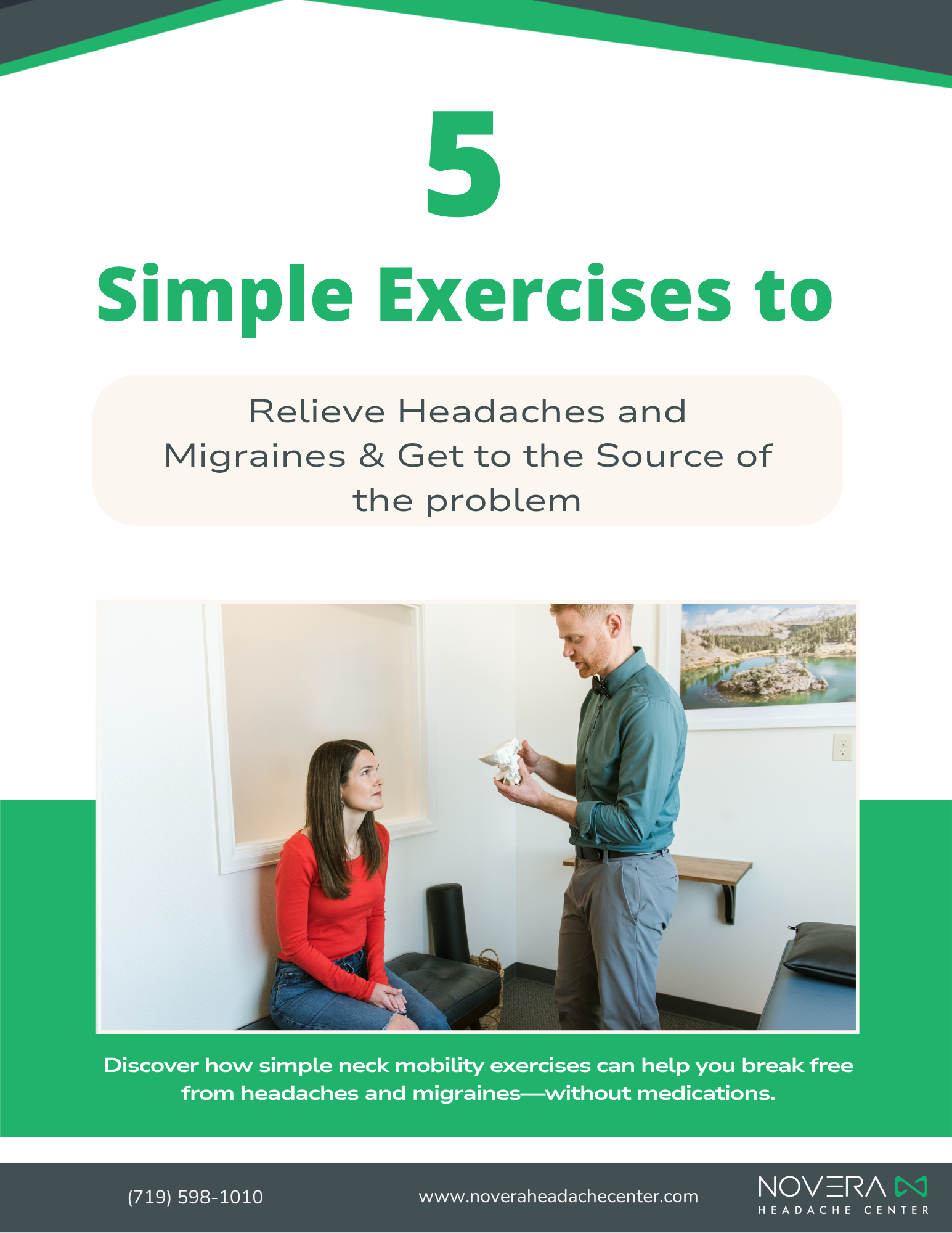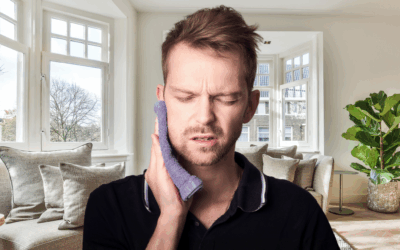Many people think tinnitus — that persistent ringing, buzzing, or humming sound in the ears — always starts in the ear. But as Dr. Taves explains, “for many people, the ringing can actually be influenced by what’s happening in the neck or jaw.”
At Novera: Headache Center, Dr. Taves and his team frequently see patients who notice their tinnitus changes when they move their neck, clench their jaw, or shift their posture. That’s a key sign the tinnitus might be somatic, or neck-related.
What Is Somatic Tinnitus?
Tinnitus can come from two main sources:
- Ear-based tinnitus, related to inner ear or nerve issues.
- Somatic (mechanical) tinnitus, which is influenced by movement or muscle tension — often in the neck or jaw.
Somatic tinnitus is caused by irritation or mechanical restriction around the upper cervical spine, where nerves and muscles interact with the auditory system. When those structures are tight or imbalanced, the brain can interpret that input as sound — the ringing or humming many people experience.
Can Neck Tension Cause Tinnitus?
Yes. Neck tension, stiffness, or poor posture can affect nerve and blood flow around the upper cervical region.
According to Dr. Taves, “if the ringing changes when you move your neck, that’s a sign there’s a mechanical component.”
Common causes include:
- Forward-head posture or prolonged sitting
- Jaw clenching or teeth grinding
- Whiplash or neck trauma
- Weakness in postural muscles
- Stress and poor breathing patterns
Self-Testing for Neck-Related Tinnitus
If you notice ringing or changes in sound when you:
- Turn your head left or right
- Tilt your chin up or down
- Clench or move your jaw side-to-side
— your tinnitus might have a mechanical or neck-related component.
This is valuable information because it means your tinnitus may be treatable through movement, posture correction, and physical therapy, rather than medication alone.
For related guidance, check out How to Know If Your Headache or Migraine Is Caused by a Neck Problem.
How the Neck and Jaw Affect the Ears
The upper cervical spine (the top two neck joints) sits close to the cranial nerves that influence the ear and jaw. When muscle tension or joint restriction affects this region, the resulting pressure can disrupt normal nerve signaling to the ear — creating tinnitus, dizziness, or even headaches.
This is also why TMJ (jaw) dysfunction often goes hand-in-hand with tinnitus and headaches. The jaw, ear, and neck share similar nerve pathways, so an issue in one area can create symptoms in another.
For more on this, explore our blog post on TMJ and headaches or schedule a free discovery visit to see if your tinnitus could be linked to your neck.
How to Find Relief
If your tinnitus is related to the neck, focusing on movement and posture is key.
- Maintain a tall, relaxed posture throughout the day.
- Perform gentle neck mobility exercises — chin tucks, rotations, and stretches.
- Avoid clenching the jaw or holding tension in the shoulders.
- Get a professional assessment to identify underlying neck or joint restrictions.
Dr. Taves emphasizes that these changes “don’t just help your neck — they can help restore normal nerve function and reduce tinnitus intensity.”
Quick Summary
Understanding the tinnitus and neck connection can help you identify if your ear ringing is actually a mechanical issue. By improving posture and addressing neck tension, you may find lasting relief and a clearer path forward.




